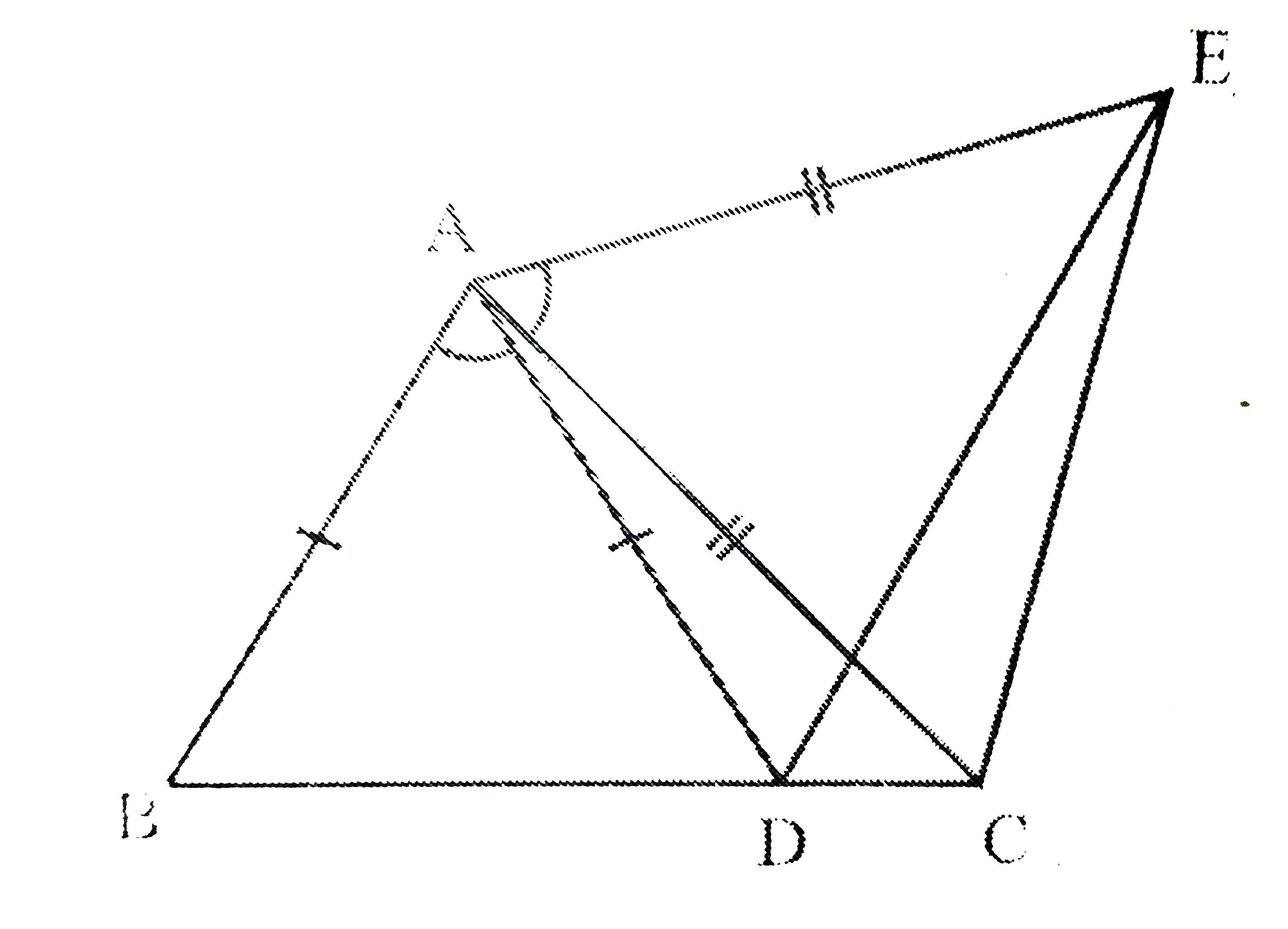BROWN : BNORW :: SOUND :?
A. SNOUD
B. OSUDN
C. SUDNO
D. DNOSU
A
C
B
D
The correct Answer is:D
Step by step video, text & image solution for BROWN : BNORW :: SOUND :? A. SNOUD B. OSUDN C. SUDNO D. DNOSU by Reasoning experts to help you in doubts & scoring excellent marks in Class 14 exams.
Similar Questions
In a parallelogram ABCD, the diagonals bisect each other at O. If ∠ABC=300, ∠BDC=100and ∠CAB=700, Find: ∠DAB, ∠ADC, ∠BCD, ∠AOD, ∠DOC, ∠BOC, ∠AOB, ∠ACD, ∠CAB, ∠ADB
Given that
∠ABC=302,∠ABC=∠ADC=300
[We know that measure of opposite angles are equal in a parallelogram]
∠BDC=100
∠CAB=700
∠BDA=∠ADB=∠ADC–∠BDC
302–102=202
∠DAB=1800–300=1500
∠ADB=∠DBC=200 (alternate angles)
∠BCD=∠DAB=1500
[we know, opposite angles are equal in a parallelogram]
∠DBA=∠BDC=100
[we know, Alternate interior angles are equal]
InΔABC
∠CAB+∠ABC+∠BCA=1800
[since, sum of all angles of a triangle is 180^0]
700+300+∠BCA=1800
∠BCA=1800–1000=800
∠DAB=∠DAC+∠CAB=700+800=1500
∠BCD=1500 (opposite angle of the parallelogram)
∠DCA=∠CAB=700
In ΔDOC∠BDC+∠ACD+∠DOC=1800
[since, sum of all angles of a triangle is 180^0]
100+700+∠DOC=1800
∠DOC=1800−800
∠ACB=800View SolutionIn an equilateral triangle ABC if AD⊥BC, then AD2 = (a)CD2 (b) 2CD2 (c) 3CD2 (d) 4CD2
View Solution
Knowledge Check
- Question 1 - Select One
C E B A C D B C D A C E B E D C A B A D A C E D U B A U B D B U
How many such D's are there in the given arrangement each of which is immediately preceded by a consonant and also immediately followed by a vowel?AMore than fourBfourCTwoDOne - Question 2 - Select One
C E B A C D B C D A C E B E D C A B A D A C E D U B A U B D B U
How many such A's are there in the given arrangement each of which is immediately preceded by a 'B' and also immediately followed by a consonant?AOneBNoneCMore than threeDTwo - Question 3 - Select One
What is the sound make by seal called ?
A. Bark
B. Moo
C. Screech
D. GrowlAABDCBDC
In Fig. 7.21, AC = AE, AB = ADand ∠BAD =∠EAC. Show that BC = DE.
 View Solution
View SolutionABCD is a cyclic quadrilateral whose diagonals AC and BD intersect at P. If AB=DC, prove that:
(i)PAB ≅PDC
(ii)PA=PD and PC=PB (iii) AD∣∣BCView SolutionIf in two triangles ABC and DEF , ABDE=BCFE=CAFD , then FDECAB (b) FDEABC (c) CBAFDE (d) BCAFDE
View SolutionIn Fig. 10.78, if AD, AE and BC are tangents to the circle at D, E and F respectively. Then, (FIGURE) AD=AB+BC+CA (b) 2AD=AB+BC+CA (c) 3AD=AB+BC+CA (d) 4AD=AB+BC+CA
View SolutionSound waves cannot travel in :
A. Air
B. Water
C. Vacuum
D. SteelView Solution
